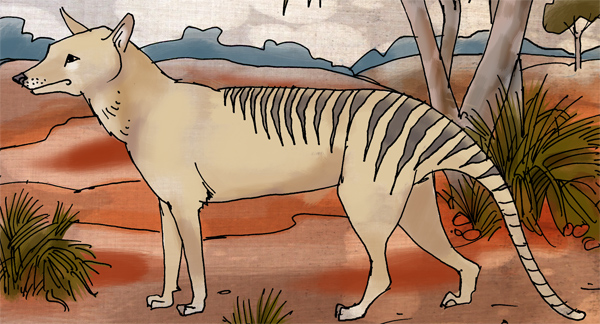1. Vocabulary.

Before you read the text, check the meanings of these words. Choose the correct word for each definition.
2. Read.
Read the descriptions and choose the correct picture.
1. Yeti. Yeti reports have been reaching the West from the Himalayas for about 100 years. Most of the evidence has involved footprint finds by mountaineers. There are no reliable photos – apart from footprints – and the actual descriptions vary considerably. Many of these descriptions seem to have been influenced by local folklore. If it exists, it may be some form of Asian ape, probably related to the orangutan, but one which has adapted to the high-altitude forests of the Himalayas.
2. Tasmanian tiger. The thylacine was a carnivorous leopard-sized marsupial found in Australia. Called "tiger" because of its stripes, the thylacine was actually much more dog-like. It was presumed to have become extinct when the last known specimen died in a Tasmanian zoo in 1936. Since then there have been many eyewitness reports (including two from scientists) and countless expeditions to prove the thylacine survives. So far all that has been produced are a few footprints. Several scientists, however, are convinced that the thylacine lives on, possibly in Queensland: a Queensland tiger is known to have existed as recently as 15,000 years ago.
3. Bigfoot (Sasquatch). Eyewitnesses report seeing a giant ape standing over 2 metres tall. Most reliable reports have come from cold mountain forests of western North America and indicate solitary behaviour. Many scientists dismiss such accounts, but there are now about 2,000 reports filed, as well as a film taken in California in 1967. There are also hundreds of cases of people finding Sasquatch tracks. Scientists who have studied the issue conclude that Sasquatch could be a surviving form of giant apes that may have crossed from Asia to America in the last ice age.
4. Pterosaurs. Early in the 20th century, a British colonial official in what is now Zambia collected descriptions from natives of "birds" with 2-metre bat-like wings. Since then there have been a surprising number of reports describing what appear to be flying dinosaurs. These ought to have become extinct 65 million years ago. In 1933 two naturalists encountered an enormous, bat-like flying animal that swooped along a river in Cameroon. Pterosaur reports have also come from, of all places, Texas. One would expect that such large flying animals would be too visible to escape scientific detection.
5. Mokele-mbembe. Reported in Central Africa for more than 200 years, this is said to be a large reptile that lives in swamps, lakes, and river systems. Eyewitnesses say that it has an elephant-like body with a long, thin neck and a small head, and that it occasionally walks on land, leaving large, three-clawed tracks. Some have speculated that mokele-mbembe is a small dinosaur from the Cretaceous period, about 65 million years ago. This possibility is dismissed by most scientists, although the Central African forest has remained relatively unchanged since then. There is no good physical or photographic evidence, but there is one good sighting report, from a zoologist in 1983.
Adapted from "Cryptic Odds" by J Richard Greenwell in BBC Wildlife, March 1993, pp 46-48.
3. The writer's opinion.
Put the animals in order from those most likely to be in existence to those least likely to be in existence – according to what you think the writer's opinion is.
Tasmanian tiger:
This animal did exist once – as recently as 1936 – and the text says "several
scientists are convinced that the thylacine lives on".
Bigfoot:
There are 2,000 reports of sightings, but no actual specimens. Some scientists
think it "could be" a giant ape.
Mokele-mbembe:
There has been no good evidence and scientists dismiss it, but "there is one good sighting
report".
Yeti:
There have been lots of sightings, but none are reliable. The writer says, "... if it exists, it may
be ...".
Pterosaurs:
Dinosaurs became extinct 65 million years ago, so the writer finds the number
of reports "surprising", and adds that such a large animal would surely have
been seen by scientists.